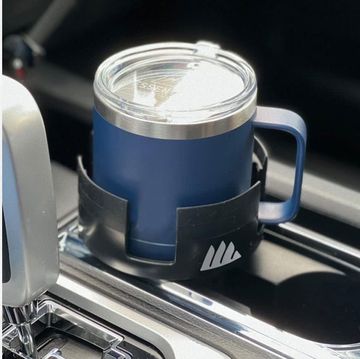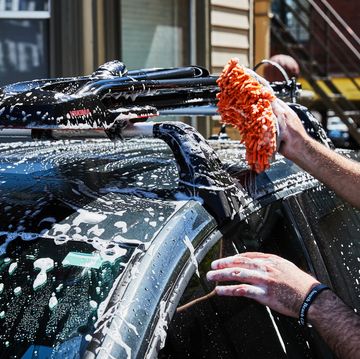You're crawling along in traffic and, despite the fact that your pickup bed is empty, the coolant temp is uncomfortably high. Then you realize that the air conditioner is blowing warm. You turn off the a/c and open the windows just as the traffic breaks and you speed up. The coolant temp drops. Stretching your luck, you try the a/c again--and it works fine.
LISTLESS AND LAZY
At home, you lift the hood, puzzled. The coolant level is right on, no hoses are leaking and the accessory belt is intact. You start the engine, let it idle and make a visual inspection. There's no sign of belt slippage, but the radiator cooling fan barely seems to be spinning. When you move the throttle linkage to rev the engine to about three grand, fan speed picks up visibly, but it's still slow.
If your truck is like most, the cooling fan is mounted to its drive pulley via a clutch. Clutch fans operate at different speeds under different conditions to help reduce drain on the engine and to save fuel. When the engine is hot, the clutch fan runs nearly as fast as the engine. When the engine is cold, the fan runs much more slowly.
The fan clutch operation is regulated by a valve that is opened and closed by a thermostatic spring. The valve controls the flow of a viscous silicone fluid between chambers in the clutch assembly. When the engine is cold, the clutch is essentially disengaged, which is why the fan runs at its slowest compared to the engine's speed. As the engine warms up, the air flowing to the fan assembly becomes hotter. The hotter air causes the thermostatic spring to unwind and open the valve. Silicone fluid from the reservoir chamber flows into the main chamber, engaging the clutch, and the fan spins faster (though it's still slightly slower than the engine).
A broken or weakened thermostatic spring in the clutch hub cannot be replaced or repaired
Silicone fluid oozing past the bearing seal means the clutch must be replaced.
NONE LIKE IT THAT HOT
The first signs that a clutch fan is failing are obvious: The engine starts running hotter and a/c performance drops. To confirm the diagnosis, start with this simple test: Spin the fan as hard as you can on an engine that has not been started that day. If the fan rotates more than five times, you can bet the clutch is bad. You should feel some resistance and the fan may spin up to three times, depending on the ambient temperature. But even if it rotates three or fewer times the clutch could still be bad. You need to do more tests. A few late-model pickups and SUVs, such as Ford diesels and the Chevy TrailBlazer and others with the 4.2-liter inline Six, have an electronically controlled valve for the fan clutch. In these vehicles, the silicone fluid doesn't drain back overnight, so the fan may barely spin on a cold engine. It could take a brief drive to get it to declutch.
BAD CLUTCH
If your fan clutch is not operating the way it should, it's likely due to a fluid leak or a bad thermostatic spring or valve.
When a leak occurs, it's at the bearing seal, at the center rear of the clutch. Run your finger around the joint and if you get a big dollop of black goo, that's silicone fluid that has leaked from the housing. Replace the fan clutch. A light smear of silicone fluid could be normal seepage--no seal is perfect. Obviously, if a substantial amount of fluid is missing, the clutch won't spin as fast as it should.
As for the other potential culprit, most failing thermostatic springs open the valve too soon. This premature clutch engagement means the fan spins faster than it should, but that doesn't make the engine or a/c run hot. On the other hand, failed valves that stick closed result in low fan speeds and little cooling.
HOW HOT WAS IT?
Let's say spinning the fan didn't reveal a problem, there's no leak and you think the spring is okay. You could still have a bad valve. Here's how to find out. You'll need to test the temperature of the air moved by the fan using a probe-type thermometer that reads to at least 220° F, preferably to about 250° F. You can't use an infrared thermometer because it will read the temperature of a nearby surface, which could be very different from the air temperature. Find a joint in the fan shroud with enough flex to let you insert the probe without getting it in the path of the fan. If necessary drill a small hole in the shroud. Run the engine at fast idle. Check the engine temperature gauge or your scan tool. If it's a hot day, the coolant temp will rise. As it approaches 200° F, you should hear the fan noise rise to a mild roar and see the fan spinning a lot faster. Air temperature in the shroud should remain in the 150° F to 190° F range. There are some exceptions--for instance, there are Chrysler products that may have a clutch fan rated at up to 205° F. Note: Don't try to take an instant reading. A conventional thermometer, even the probe type, takes at least a couple of minutes to stabilize.
If you don't have a thermometer, you can hear what you need to know. Listen to the fan noise with the engine cold, then warm up the engine. Watch the temp gauge. As the coolant nears 200° F, you should hear the noise increase as the fan engages and starts pulling a lot of airflow. If ambient temperatures are cool, cover the front of the grille with cardboard to block the flow of air through the radiator and to help raise the coolant temperature (leave the a/c off). As the coolant gets hot, fan noise should increase to a roar and the fan should spin a lot faster. If not, you'll need a new clutch.
Don't let the vehicle overheat. Remove all or part of the cardboard before the temperature goes over 210° F.
Use a probe-type thermometer to check the temperature of the air moving through the radiator.
You can check the fan's speed against the manufacturer's specs by using a photo-tachometer.
GET PHYSICAL
Check for slop in the clutch. With the engine off and the fan stopped, try to rock the fan blade fore-aft to feel for free play in the clutch. Don't confuse this with flex in the blade. If the fan moves half an inch or more, something's wrong inside the clutch.
You also can check fan speed with a photo-tachometer, an inexpensive tester that is used when a conventional tach can't easily be employed. The photo-tach uses an infrared beam, aimed at a strip of tape, usually attached to the edge of a spinning fan blade. It's worth using if the manufacturer provides any specs, even approximate. On some late-model Jeep Grand Cherokees that have both a special clutch fan and a separate electric fan, the factory spec is just 300 rpm max with the engine cold. Here, the electric fan is a major contributor to engine cooling. On other systems, with a cool engine, you'll find fan speed at about 1250 to 1500 rpm when the engine is revving at 3000 rpm. At high coolant temperatures, the fan speed will rise to about 2100 to 2500 rpm with the engine revving at 3000 rpm.
MAKE THE CHANGE
Begin by separating the clutch from the fan. On most domestic-brand pickups and SUVs, the fan is held to the clutch by a circle of screws or bolts, and the clutch is threaded onto the water pump pulley by a large nut. On many imports, four or five bolts hold the fan to the clutch, and four or five hold the clutch to the fan pulley.
Before you unbolt anything, look at the fan pulley and the routing of the drivebelt. If it's a serpentine belt and wraps around the pulley from the underside, it's probably spinning the fan in reverse. Be sure you get a matching replacement, often marked "Reverse."
If you're lucky, there may be enough room to unbolt and remove the fan and clutch without taking off the radiator shroud. More likely, you're going to have to remove the shroud. This means draining some coolant, disconnecting the upper radiator hose and sometimes removing the belt.
If the clutch is held to the belt pulley hub by screws or bolts, use a plumber's strap wrench to keep the pulley from turning while you loosen the screws. If they're not very tight, you may be able to get away with just pressing on the belt.
If the clutch is held by a single-nut mount, employ a tool that uses the pulley screwheads for restraint. There are inexpensive wrenches designed specifically for this job. Check with your auto parts store.
Reverse the order to install the new clutch. When handling the clutch, lay it flat with the seal facing up to be sure that no silicone leaks out.
GOIN' ELECTRIC
You may be tempted to drop the clutch and install an electric fan kit. If you're taking a street car to the track on weekends, the extra power might get you a trophy. But if you're just fixing the family car, remember that a vehicle maker can integrate electric fan controls into the powertrain computer for a more precise result than you could ever get with an aftermarket kit.
Buy or rent any special tools necessary to loosen the clutch from the water pump.














